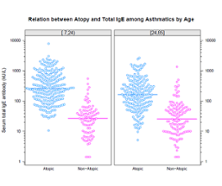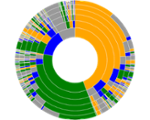Introducing Rho Data Visualization
We work in clinical research and our industry is driven by data. Every phase of our trials requires us to collect, monitor, analyze, and report data. While each of these steps is equally important, reporting is arguably the most impactful step. When we create reports, we invite our audience to interpret the data and draw meaningful conclusions.
 Is the trial being conducted correctly? Is participant enrollment on schedule? Are we protecting our participants’ safety? Was the investigational product effective? Was our hypothesis confirmed? We rely on effective data reporting to answer these questions.
Is the trial being conducted correctly? Is participant enrollment on schedule? Are we protecting our participants’ safety? Was the investigational product effective? Was our hypothesis confirmed? We rely on effective data reporting to answer these questions.
Unfortunately, our industry doesn’t always use the best tools or practices when it comes to data reporting. If you’ve ever had to make sense of 50 pages of data listings or spend hours creating figures using spreadsheet software, you know what we mean. If these methods feel outdated, it’s because they are. The good news is that there are plenty of alternatives available to us, and in recent years, important stakeholders in our field have acknowledged our need to branch out, adapt, and evolve.
Granted, some of the formats for reporting are mandated by formal regulations. We may not be able to do much about these reports, but many of the methods we use to report data are left up to us as analysts and data scientists. As such, we argue that clinical researchers have a responsibility to do the data justice and communicate them as clearly and effectively as possible.
 What does this mean for our industry? It means looking for newer and better ways to communicate data. It means thinking carefully about how the method of reporting impacts perception and comprehension of data. It means researching novel technology tools for sharing data.
What does this mean for our industry? It means looking for newer and better ways to communicate data. It means thinking carefully about how the method of reporting impacts perception and comprehension of data. It means researching novel technology tools for sharing data.
Rho took these challenges to heart. In 2014, we created a Data Science team to research and promote the best practices and tools for visualizing and reporting data. The team was founded by a few senior biostatisticians, web programmers, and project managers who had years of experience directly supporting clinical trials. This first-hand experience with clinical research gave our team a unique perspective on the data reporting needs at all stages of clinical research from study design, to participant enrollment, monitoring, data collection, analysis, data exploration, to publication and reporting. Our Data Science team marries clinical research experience with the technical skillset to create innovative, cutting-edge data visualizations in support of our research projects.
 In support of our projects, the has developed hundreds of novel graphics for both static reports and interactive web-based use. In both cases, the response from our clients and research partners has been overwhelmingly positive. Beginning in 2015, we began taking the best of our visualizations and turning them into reusable, open source tools developed on GitHub. At the time of this post, we have over 50 publicly available repositories available for anyone to use.
In support of our projects, the has developed hundreds of novel graphics for both static reports and interactive web-based use. In both cases, the response from our clients and research partners has been overwhelmingly positive. Beginning in 2015, we began taking the best of our visualizations and turning them into reusable, open source tools developed on GitHub. At the time of this post, we have over 50 publicly available repositories available for anyone to use.
Data visualization has tremendous potential to improve the way we communicate, understand, and interact with data. If you would like to learn more about Rho’s data visualization work, contact us: graphics@rhoworld.com.
This post originally appeared on Rho’s Corporate Blog.
 Graphics
Graphics